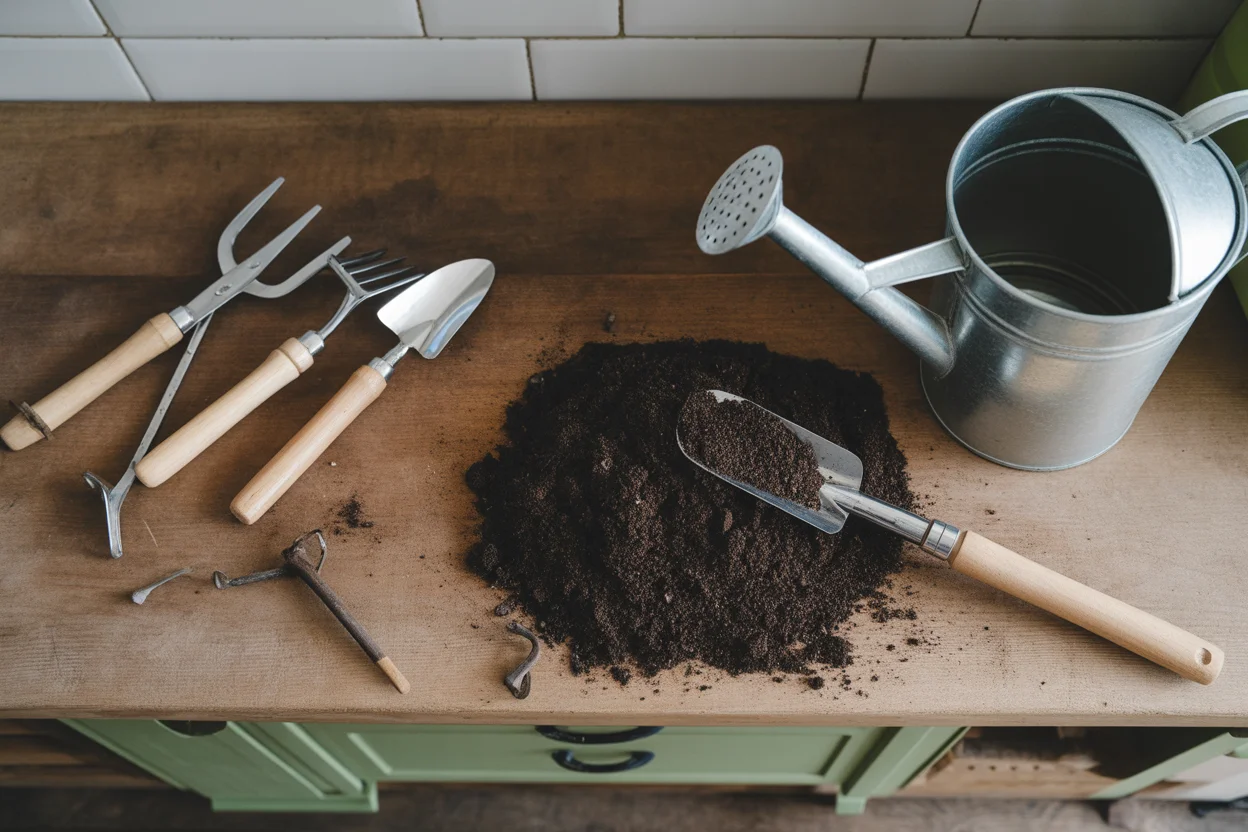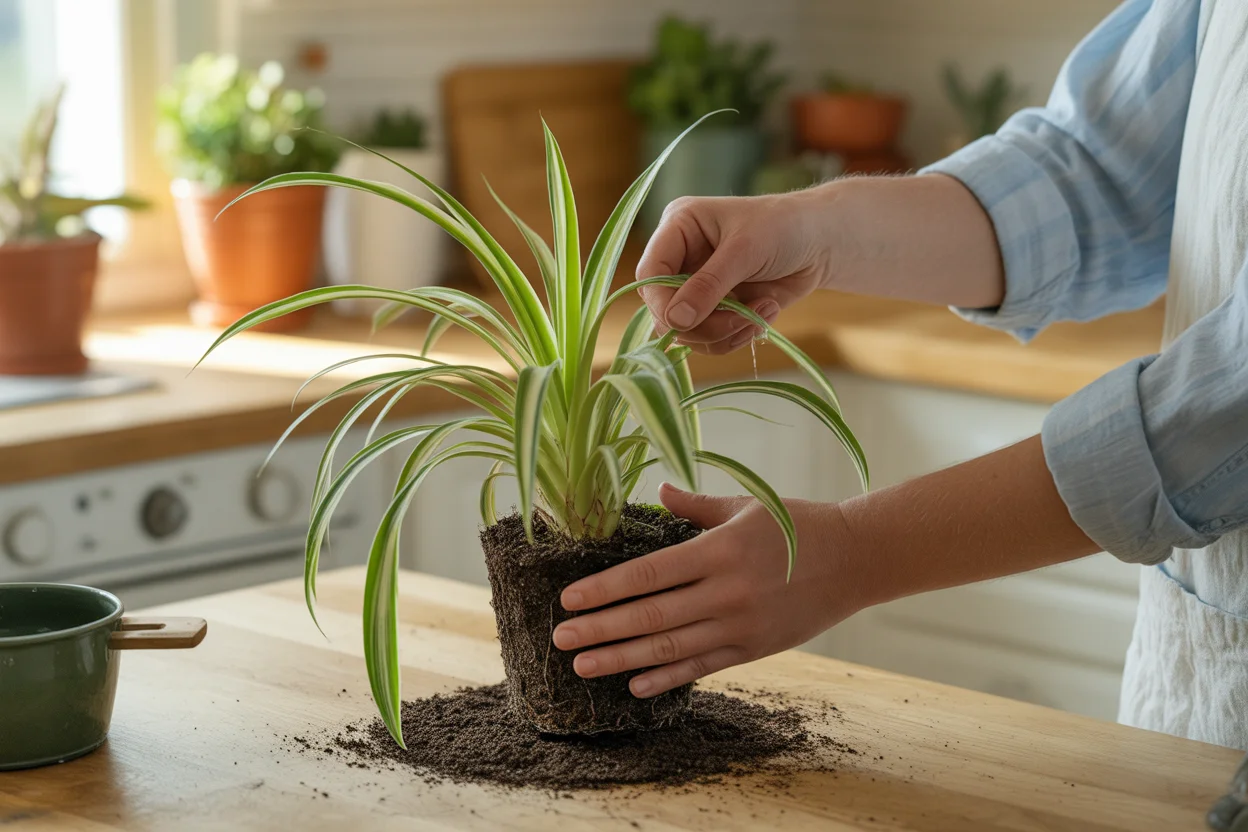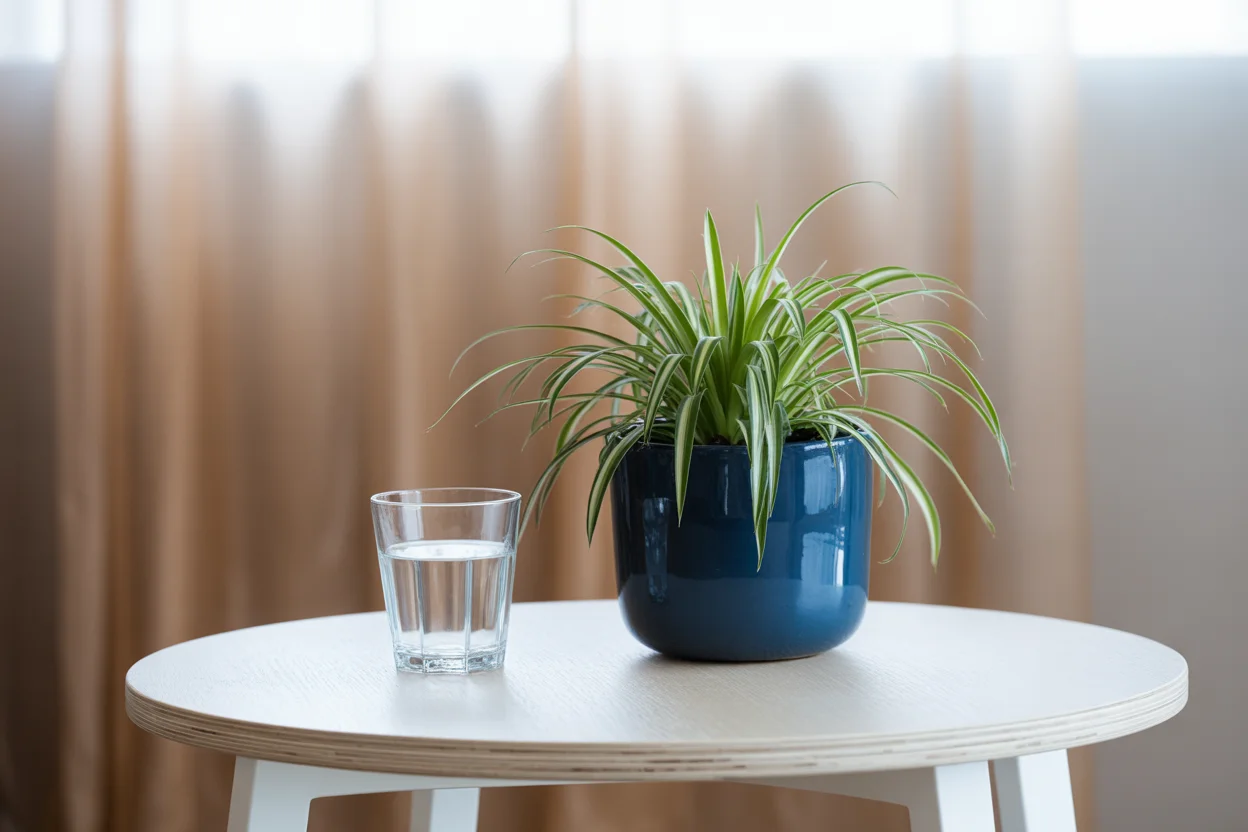Spider plant care can be such a mixed bag, right? You think you’ve got it down and then, poof, the leaves turn crispy or droopy. Or worse yet, they just freeze in time and do nada. I remember when I first got mine, I fussed over it like it was a fancy goldfish (not the one you win at a carnival, the five-star-restaurant type). You’re here probably because your spider plant looks a little off. Lucky you, though: they’re easier than folks think. That’s why I keep mine around, honestly. Kinda like my Carmen Jane and China Doll, which are a joy after a long workday stuck indoors. If you’re still stuck—don’t sweat it. Let’s cut through the fluff and fix up your spider plant care problems together.
Table of Contents
About spider plants
Spider plants are those cheerful, striped leaf beauties you see in so many homes. They’ve got these long, skinny arching leaves, sometimes plain green, but usually with pretty white stripes running down the middle. Fun fact: they’re called spider plants because they send out long runners with baby plants dangling at the end, kind of like spiders dropping down on silk.
The best bit about a spider plant? It’ll survive almost anything short of you setting it next to a furnace. And if you have pets, you’re safe – these guys aren’t toxic. They’re like plant training wheels, except they’re legit lovely and not at all embarrassing to own. Plants like this? Total lifesavers if you ask me.
Why spider plants are so easy to care for?
If you’re busy or just plain forgetful, you’ll probably love spider plants. There’s not much that really bothers them. You could skip a watering, place them in a not-so-sunny spot, even pop them in the garage for a week (don’t, but you could)—and these plants still putter on.
Spider plants pick you up when you’re slacking off. They don’t throw a fit when you forget to water them for a while. It’s like, no drama, please! Even if you’re used to more dramatic houseplants, these just do their thing. Compared to some leafy divas like the Carmen Jane or China Doll, spider plant care is truly a walk in the park. 
Where is the best place to put a spider plant?
So, window sills are a classic, but not always practical… especially with little ones or curious cats. Spider plants dig bright, indirect light. Direct sun can make those lovely leaves crispier than potato chips. My own ended up with a sunburn one summer—they legit turned white and crunchy in just a week. Sad times.
You’ll want to park yours a few feet from a sunny window or somewhere where the sun is filtered—think lace curtains or tucked by a north-facing window. Heck, I once plopped mine in the kitchen where it got weird stripy sunlight and it still grew like a weed.
Just don’t toss it in a totally dark space unless you want painfully slow growth. Give it a good spot, and it’ll reward you with those cute dangly “spider babies.” 
Spider plant care watering
Watering spider plants is…trickier than it seems. Trust me, I’ve killed more by loving them too much. If the soil’s soggy, roots start to rot before you know it. Yikes. Wait until the top inch of soil is dry, like the surface of a cake that’s been out on the counter for a bit. Stick your finger in if you’re unsure. It shouldn’t feel damp.
Here’s my must-do bullet list:
- Water thoroughly, then forget about it until the soil feels dry again.
- Use room temp water (super cold water can actually shock the roots, strange but true).
- If you’re using tap water and see brown tips—maybe try filtered water. Some spider plants are weirdly picky about fluoride or chlorine.
- Avoid letting them sit in saucers of water. Root rot is surprisingly fast.
Keep it relaxed. Overwatering is the real enemy here. Underwatered plants bounce back. Drowned ones? Well… not so much.
Propagate your spider plant
Propagation is where things get fun and a little wild-science-lab. Those “spider babies” or plantlets you see growing from runners—just snip them off and lay them on a bit of damp soil. Boom, new plant. Easiest propagation ever.

If you want proof, take it from my neighbor. She basically ignores hers except when she needs to gift a plant, then hacks off babies and pops them in recycled yogurt pots. They always take. Some folks like to sit plantlets in a glass of water first to see roots develop, but honestly, dunking them in soil works fine.
Kids love doing this stuff (or maybe just my niece, who named hers “Spider Queen”). You get more greenery without buying more plants. It’s the ultimate budget hack.
Common Issues for your Spider Plant
Look, nobody’s perfect. And neither is the spider plant. The most common thing? Brown tips. These are usually harmless, but if they bother you, snip them off with sharp scissors. Big yellow patches mean too much sun or soggy feet. Pale yellow leaves can mean overwatering, but sometimes poor soil or just age. Basically: yellow = either too wet or too much light. Don’t stress unless you see floppy, mushy leaves—that could mean root rot.
Sometimes mine gets a bit dramatic and flings off leaves if I totally forget to water for a couple weeks. If this happens, just trim away the ugly stuff and adjust. You’ll see it bounce back way faster than other houseplants. Oh, and rarely, you get bugs like aphids or spider mites. Just squirt with soapy water and wipe. Nothing fancy.
“I had no clue what I was doing—honestly, I just copied what a friend did. Now my spider plant is giving me babies like crazy! It’s truly the easiest plant I’ve ever owned.”
— Mariah, Illinois
General care of Spider Plants
If you want a quick-glance guide, here’s a little table for you:
| Light | Watering | Repotting | Fertilizer |
|---|---|---|---|
| Bright, indirect | When top inch is dry | Every 2 years or rootbound | Monthly in spring/summer |
For fertilizer, any balanced liquid feed will do. Don’t overdose (more is not better). Repotting? Wait till roots are busting out the bottom—these plants like to be a little cramped. Trim off faded flowers or crispy leaves to keep things tidy.
If you want to geek out on other easy plants, check out my absolute go-to guides for Elephant Ear care and Kalanchoe care, which are both honestly super manageable too.
How to make a spider plant happy?
You know, spider plants are easy, but a happy one absolutely pops. Bright light? Yes, but not sunburn. Water just right, as we covered. Pro tip: give them a bath every few weeks—literally, run a gentle shower over the leaves. It cleans dust (leaves get yucky fast) and boosts humidity, which they love.
Rotate your plant every week or so for even leaf growth. If you see a big clump of “babies,” take a few off to let the main plant use its energy. Also, talk to it if you’re into that—mine seems to like Taylor Swift, but maybe that’s just my head. Either way, don’t overthink it. Happy plant, happy home.
Should I cut the brown tips off my spider plant?
Okay, brown tips are ugly. There, I said it. But you can totally snip them off! Just—seriously—use clean, sharp scissors. Try not to cut into the green part too much. If you cut way in, you’ll see more brown on the edge, and it looks even weirder.
Reasons for brown tips? Usually overwatering, too much fertilizer, or tap water that’s got stuff in it. Swap your water or just water less and these should chill out.
I like to cut the ends at a tiny angle. It looks more natural, not like a boxy haircut. Speaking of haircuts, mine often needs a trim every month or so. It’s weirdly satisfying, like giving your plant a spa day.
Do spider plants need full sunlight?
Oh heavens, no. A spider plant in direct, hot sunlight will go bleached faster than my old jeans from high school. Full sunlight isn’t just unnecessary; it’s almost mean. These plants evolved under larger trees, so they want light—yes—but filtered or indirect is their jam.
If your only window pours in sun, try pulling the plant back a bit, or put it behind sheer curtains. If you notice pale, fading leaves, move it farther from the window. Too little light and the leaves get kinda floppy and slow. But too much sun and, well, you’ll be trimming brown tips until the cows come home. Give them the sweet spot and they’ll reward you with lush, stripy foliage.
Keep Your Spider Plant Smiling
So, now you’ve got the real scoop on spider plant care. These beauties basically want to be left alone, with a little water here, a tidy-up there, and a spot near your favorite window. Don’t panic about a few brown tips or floppy leaves—most problems have fixes, and the plant’s nearly impossible to kill. For more great advice, the Spider Plant Care community on Reddit is buzzing, and there’s also a fab complete guide on Patch if you need another deep dive. Give one a go—you’ll feel like a plant pro in no time.
For more indoor plants care and grow tips, I write an article about 10 Delightful Common Indoor Plants to Brighten Your Space or you can check all the indoor gardening blog category.

FAQ about Spider Plant Care
Q: Why are my spider plant’s leaves turning yellow?
A: Probably overwatering (you knew I’d say that!), but also check for too much sunlight.
Q: Can I grow spider plant babies in water?
A: Yup. Pop a plantlet in a glass with just the tip touching water—you’ll see roots in about a week. Soil works too, though.
Q: How often should I repot my spider plant?
A: When roots bust through the bottom or when growth slows down. Every couple of years is normal.
Q: What do I do if my spider plant’s leaves look curly or deformed?
A: Most often, that’s due to low humidity or inconsistent watering. A quick shower, then regular care, should do the trick.
Q: Is it safe for cats and dogs?
A: Totally! Spider plants are pet-friendly, so you’re good.

